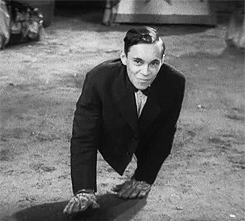
Whether deformities are caused by genetics or environmental factors, they spark curiosity and awe throughout the world. Many who have them have accepted their differences and led fulfilling lives. Some have undergone risky surgeries to change their appearance. Some have joined the circus and embraced the label “freak” to make living. Others have concealed themselves to avoid people’s reactions.
Cutaneous Horns
Cutaneous horns (cornu cutaneum) result when keratin manifests in a conical shape and protrudes outward from the skin. Lesions found at the base of these horns may be malignant or benign.
When cutaneous horns grow, they tend to be on people with fair skin, at an average age of 50. Sun-exposed areas of skin are most susceptible. A biopsy can help determine the cause because cutaneous horns are related to a variety of medical issues. Possibilities range from verruca to Bowen’s disease. The majority of horns are benign, but about 20 percent are cancerous, and another 20 percent are pre-cancerous.
Some people even choose to let their benign horns grow. If a horn does sprout on your forehead, you can at least now rest assured that you’re probably not turning into a demon. Note: Most cutaneous horns are shorter than the one pictured above.
Aniridia
Black eyes aren’t necessarily a sign of pure evil. A condition called aniridia can cause absence of color in the iris, which may lead to weakened vision and sensitivity to light. This figures, as the literal translation of aniridia is “without iris.” Further conditions, such as glaucoma and cataracts, are likely to occur along with aniridia. Sufferers may be legally blind, may see well enough to drive, or may even have 20/20 vision.
A gene mutation causes this condition. It occurs around the end of the first trimester of pregnancy, as the eye develops. Aniridia can be inherited; a parent with this condition has a 50-percent chance of passing it on to his or her child. Parents who each have a mutated copy of the PAX-6 gene may be at risk for having a child with Gillespie syndrome (autosomal recessive aniridia) and related cognitive disabilities.
Backward-Bending Knees
People with genu recurvatum have knees that bend backward surprisingly far, sometimes creating an animal-like appearance. The most severe cases involve a congenital dislocation of the knees. Other cases involve differences in leg length or diseases such as cerebral palsy and multiple sclerosis. Another cause is physical trauma to the knee. It could happen while playing sports or in a car accident, for instance.
Surgery and physical therapy can help treat the condition. Leg braces may also be used. Depending on how well treatment works, this condition may become a permanent disability for some individuals.
To date, the most well-known case of genu recurvatum is that of Ella Harper, born in Tennessee circa 1870. Ella preferred to walk on all fours. She was dubbed “Camel Girl” and found great success in the role. She even starred in W.H. Harris’s Nickel Plate Circus in 1886 and used the profits to better her life.
Lobster Claws
People born with ectrodactyly tend to have deformities of both their hands and their feet. Varying degrees of surgery are used to correct this condition.
Known commonly as split hand/foot malformation (SHFM), lobster claw syndrome involves missing fingers or toes along with gaping clefts in the sufferer’s hands or feet. Fingers or toes are fused with other digits or webbed.
If only one limb is deformed, it likely occurred due to a non-hereditary genetic mutation. If the hands and feet are all deformed, the condition was inherited. Parents who carry the gene have a 50-percent chance of passing it down to their offspring. Some choose to have children despite the high risk.
Lobster claw syndrome is not related to more complicated medical conditions or mental barriers. The only challenge is learning to function with hands and feet shaped differently than most.
Neurofibromas
Those with neurofibromatosis have tumors (“neurofibromas”) on their nerves or under the skin. The tumors can often be removed. Even when they can’t be excised, they’re benign and won’t cause physical harm in the majority of cases.
Of the two types of neurofibromatosis, Recklinghausen disease is the most common. It can be, and often is, inherited. Parents with Recklinghausen have a 50-percent chance of passing it on to their children. If there is no family history of the disease in a Recklinghausen patient, the condition is caused by a genetic mutation at conception.
Cases of this disease range from mild to severe to debilitating. The bulbous lumps can absolutely blanket skin in more extreme cases.
Hypertrichosis
Hypertrichosis is also known medically as Ambras syndrome and cheekily as “werewolf syndrome.” Genetics cause people with hypertrichosis to have an excessive amount of hair, which may grow all over the body or only in concentrated areas. Ambras syndrome may also be acquired later in life—in relation to cancer, for example.
Fewer than 60 cases have ever been recorded, but this is not just a rarity for the history books. People with hypertrichosis live today. In 2010, Supatra “Nat” Sasuphan of Thailand earned a spot in the Guinness Book of World Records as the hairiest teenager.
She’s one of many who’ve made the best of especially unique physical traits. People can embrace and find success through their differences, especially when those oddities are strange enough to be seen as extraordinary.










